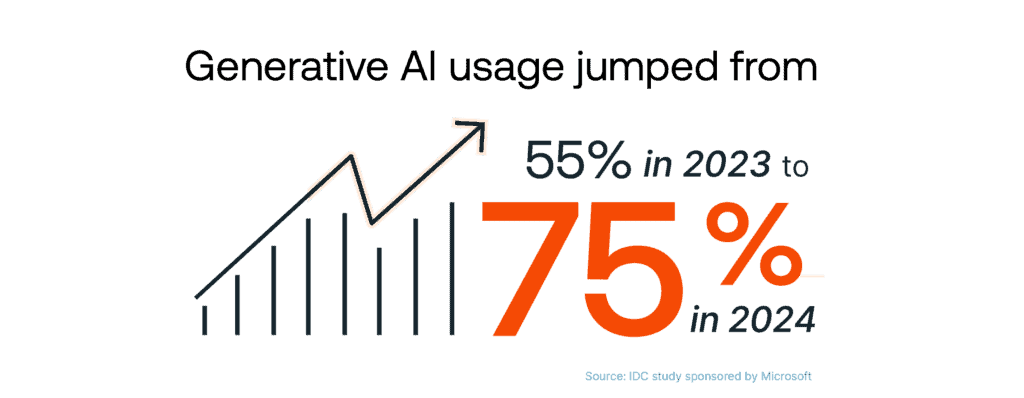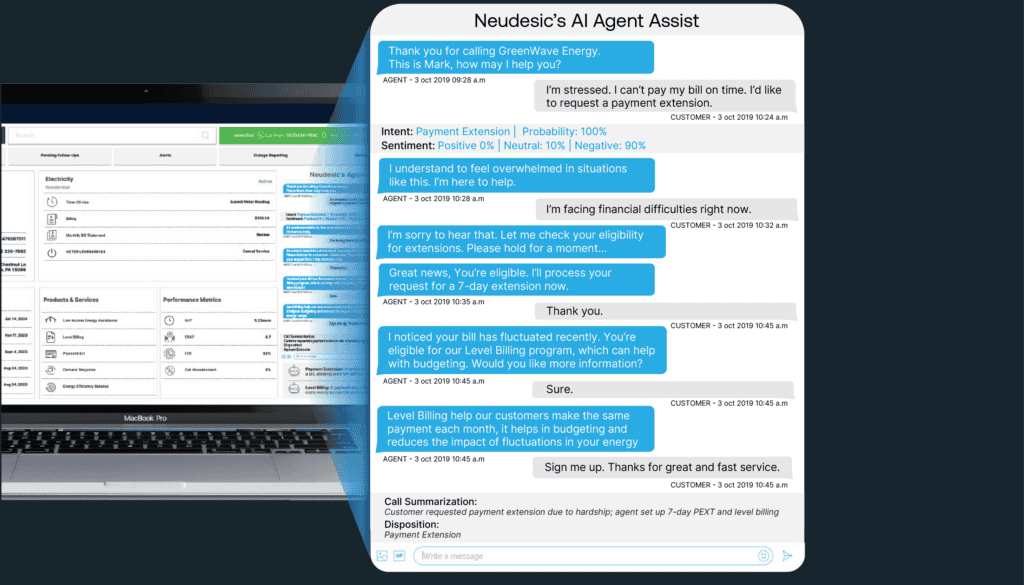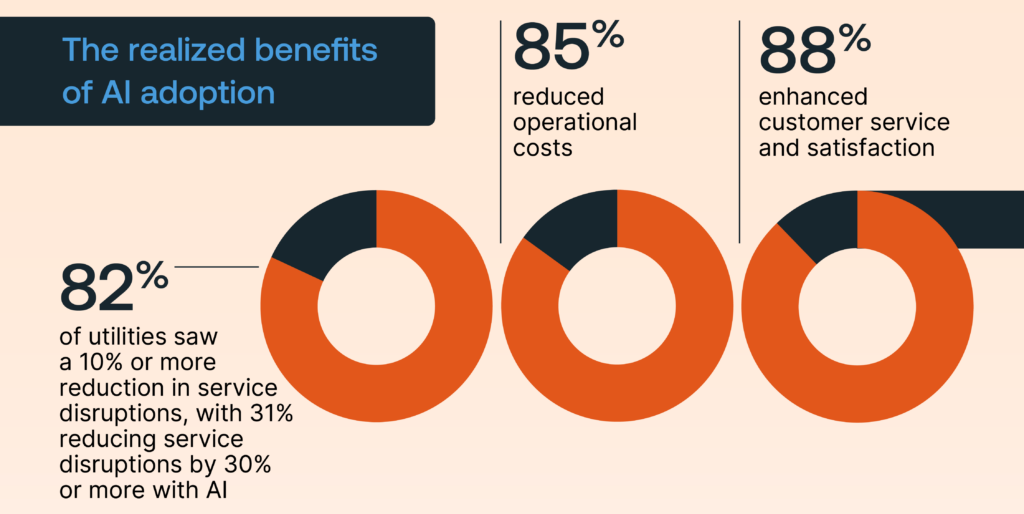

2024 is coming to an end, and this year has been nothing short of revolutionary for AI. AI didn’t just evolve— It redefined what’s possible, shaping industries with advancements that stretched across customer service, cybersecurity, and even medical research. AI adoption is accelerating rapidly as companies look for new ways to increase efficiencies further and drive innovation.
Reflecting on another pivotal year for AI, here’s a look into the 8 biggest AI trends that made headlines in 2024.
1. Generative AI: From Hype to Essential Business Tool

In just one year, from 2023 to 2024, generative AI dramatically shifted from a phase of rapid experimentation to a period of essential integrations into business operations. Furthermore, IDC’s global survey of enterprise organizations found that generative AI adoption is rapidly expanding with usage figures jumping from 55% in 2023 to 75%. Across industries, businesses began to embed AI into their core operations —particularly generative AI, which has rapidly taken hold in marketing and sales functions, where text-based communications and personalization serve as key drivers. Companies in financial services, retail, and media have used generative AI to personalize customer experiences, reduce time-to-market, and streamline operations. In short, generative AI has transitioned from hype and proof-of-concept experiments to broader adoption, with companies emphasizing real-world implementations with tangible results.
OpenAI’s ChatGPT played a key role in this surge. By December 2024, ChatGPT reached 300 million weekly active users—up from 200 million just four months prior. This explosive growth is a sign that generative AI is no longer a futuristic concept but an essential, versatile tool—one that’s quickly becoming more ingrained with our culture and society both professionally and personally—and it’s here to stay.
2. Multimodal AI: Diverse Content from One Model
Another significant AI trend was the major advancements in multimodal AI—systems that understand and generate text, images, and audio from a single interface. Multimodal AI reduces the need for multiple specialized tools, making it easier for organizations to create and manage diverse content. Fun fact: the cover image of this blog was created using multimodal AI, courtesy of Midjourney.
Two major players, OpenAI’s Sora and Google’s Veo, captured the AI spotlight by providing impressive text-to-video capabilities. These tools promise to simplify content production for marketing, media, and education, allowing users to generate video content directly from a written prompt. The result? Faster production cycles and reduced creative bottlenecks.
3. Reasoning AI: Solving Complex Problems
One of the most game-changing AI trends this year was the focus on building robust reasoning capabilities into AI systems. From new prompting methods to new model training techniques to new AI agent architectures, there have been many different approaches to building AI systems capable of solving increasingly complex tasks by iteratively planning, solving, and evaluating their work.
Models with advanced reasoning capabilities, like OpenAI’s o1, can already solve complex problems using logical steps that are similar to how humans think before responding to difficult questions. These capabilities will continue to be useful in fields like science, coding, math, law and medicine, allowing models to compare contracts, generate code and execute multistep workflows.
Microsoft’s Phi models demonstrated how smaller models, when trained on high-quality data, can improve model performance and reasoning. Meanwhile, Orca and Orca 2 showed how synthetic data for post-training could improve model performance, making small models as capable as much larger language models. These training techniques help smaller models perform better on specialized tasks. Making models faster, better and more specialized will help create new and more useful AI experiences.
4. AI Agents: From Reactive to Proactive
AI agents are swiftly evolving and transcending across differing business types and industries. AI Agents extend the ability of LLMs by equipping the model with tools and enabling it to act on a user’s behalf. Nearly 70% of Fortune 500 companies already use Microsoft 365 Copilot to offload repetitive tasks like email triage and meeting notes via Teams. But Microsoft didn’t stop there. Microsoft introduced new agents in Microsoft 365 to streamline entire business processes, freeing up employees to focus on higher-value work.
Neudesic’s AI Agent Assist is one standout example. By using large language models (LLMs), AI Agent Assist provides call center agents with quick access to information and real-time support, which improves service quality by 40%. As a result, this allows call centers to transform customer service from reactive to proactive, boosting productivity and customer satisfaction.
These enhancements represent a significant leap in collaboration and information management, simplifying workflows and enhancing productivity across organizations.
5. Cybersecurity: A Must-Have Strategy
Cybersecurity continued to be a pressing concern in 2024, with AI playing an increasingly pivotal role. According to the Microsoft’s Digital Defense Report, AI integration into cyber defense improved threat detection and response. With over 176,000 incidents detected across 5,600 organizations in May alone, the scale of cyber threats underscored the urgency for advanced defenses.
AI-powered tools enhanced capabilities like anomaly detection, threat analysis, and remediation, which are critical given the rising frequency and sophistication of attacks. Operational technology systems and AI itself were key targets for attackers, exploiting system vulnerabilities and enabling large-scale social engineering attacks. To combat this, businesses relied on AI to streamline processes like data labeling, policy enhancement, and monitoring generative AI applications to prevent oversharing or leaks.
In 2024, it became clear that AI-driven solutions weren’t just beneficial but were also critical to stay ahead of evolving cyber threats.
6. Ethical and Responsible AI: Rules Get Real
With AI becoming more prevalent, the conversation around ethics and regulation intensified in 2024. Governments worldwide introduced new AI regulations aimed at protecting privacy, ensuring accountability, and preventing misuse. In the US, there are more than 120 AI bills under review by the Congress.
Governments worldwide have introduced new laws designed to regulate AI technologies, particularly as it relates to data privacy and ethics. One of the most influential frameworks is the European Union’s AI Act, which establishes clear rules for AI deployment in Europe. These regulations aim to protect users from risks related to AI, such as biased algorithms and data misuse. Companies operating in Europe will now need to ensure their AI tools meet compliance standards.
7. AI at Work: Smarter and Faster Operations
AI is not only changing how businesses operate, but also redefining entire industries. From supply chain optimization to predictive analytics, AI tools helped companies make smarter and faster decisions.
Neudesic’s Supply Chain Control Tower is a prime example. The platform provides organizations real-time visibility to manage and optimize their supply chain performance. This results in a 50% faster resolution time and a 20% cost reduction.
In the utilities sector, Neudesic’s State of AI in Energy & Utilities Report revealed that AI adoption is driving modernization across utility companies, with 66% of organizations seeing operational improvements. From grid management to energy forecasting, AI-powered analytics are helping utilities become more agile and efficient.
8. AI in Science: Faster Scientific Discoveries, Better Healthcare
Lastly, another notable AI trend is the significant advancements in science and medicine, improving both the efficiency of scientific discoveries and medical diagnostics and treatments.
Take the Da Vinci Surgical System, which uses an AI robot to facilitate minimally invasive surgical procedures. By enhancing precision and control, the system helps surgeons perform complex operations with reduced recovery times for patients.
In medicine, models like AlphaMissense have improved genetic mutation classification. This technology increases the accuracy of genetic diagnostics, helping doctors predict the likelihood of diseases linked to genetic mutations. Such advancements are paving the way for more personalized medicine and earlier disease detection.
Looking Ahead to 2025
The 2024 AI trends showed us that AI isn’t just an experiment— it’s becoming an integral part of our business operations and in our society. Generative AI is now a daily tool, multimodal AI simplifies content creation, and reasoning AI solves real-world problems. With AI agents optimizing workflows and ethical AI guiding regulatory compliance, the future of AI feels more collaborative and grounded in responsibility.
As businesses continue to adopt AI for competitive advantage, one thing is clear: 2025 is likely to bring even more sophisticated AI capabilities that are easier to use and harder to ignore.
Related Posts



